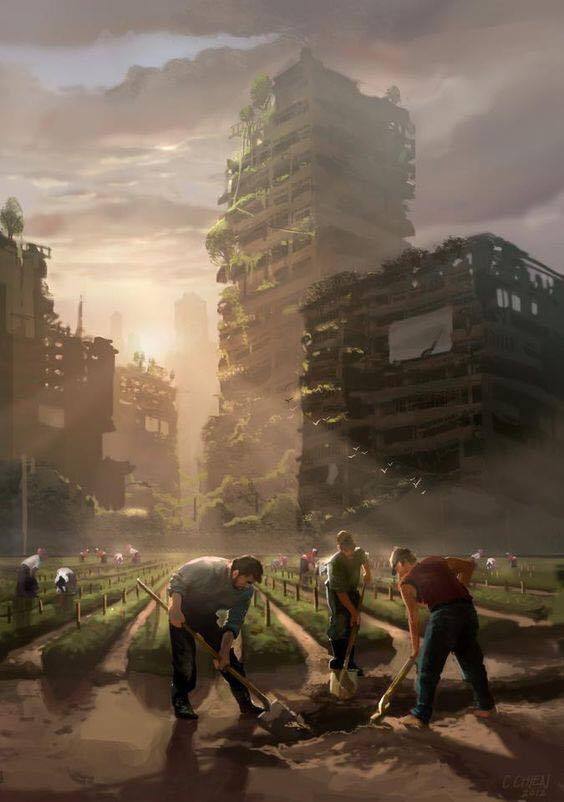[ B 1,1] Ecopolis isn’t a brand, it’s a theoretical position
Ecopolis appears to be just another word for ecocity, but it harbours some profound, albeit subtle, differences. Simply put, the concept of ecopolis (that I favour and have promoted publicly since 1989) is broadly shared by Russian, Chinese, Italian, and other European researchers and protagonists and refers to a “city plus its region”. Thus, an ecopolis is not just bricks-and-mortar, steel, glass, and concrete, but includes its essential hinterland. Its ideal model would be that of urban systems embedded in their bioregion in an interdependent relationship.
From “eco”, to do with ecology and “polis”, a self-governing city, I take ecopolis to mean city plus region (like Magnaghi and Wang) but that clearly isn’t the definition adopted by Vincent Callenbaut who would have well-heeled “climate refugees” living on self-contained, hi-tech ocean-roaming Lilypads each claiming to be an “ecopolis”. Register prefers ecocity to ecopolis, arguing that as a word it is more readily understood (and is easier to render in the plural). To include the region, he favours “ecotropolis”. But we’re all trying to say pretty much the same thing.
(“Seven Things You Need to Know about Ecocities”, Paul Downton, Melbourne. 5 March 2017 https://www.thenatureofcities.com/2017/03/05/seven-things-need-know-ecocities/)
[ B 2,1 ] It’s a question of tactics. Civil society does not respond at all well to moralistic scolding. There are small minority groups here and there who are perfectly aware that it is immoral to harm the lives of coming generations by massive consumption now: deep Greens, Amish, people practicing voluntary simplicity, Gandhian ashrams and so forth. These public-spirited voluntarists are not the problem. But they’re not the solution either, because most human beings won’t volunteer to live like they do. Nor can people be forced to live that way through legal prescription, because those in command of society’s energy resources will immediately game and neutralize any system of legal regulation.
However, contemporary civil society can be led anywhere that looks attractive, glamorous and seductive.
The task at hand is therefore basically an act of social engineering. Society must become Green, and it must be a variety of Green that society will eagerly consume. What is required is not a natural Green, or a spiritual Green, or a primitivist Green, or a blood-and-soil romantic Green.
These flavors of Green have been tried, and have proven to have insufficient appeal. We can regret this failure if we like. If the semi-forgotten Energy Crisis of the 1970s had provoked a wiser and more energetic response, we would not now be facing a weather crisis. But the past’s well-meaning attempts were insufficient, and are now part of the legacy of a dying century.
The world needs a new, unnatural, seductive, mediated, glamorous Green. A Viridian Green, if you will.
(Bruce Sterling, Viridian Design Manifesto, 2000. http://www.viridiandesign.org/manifesto.html )
